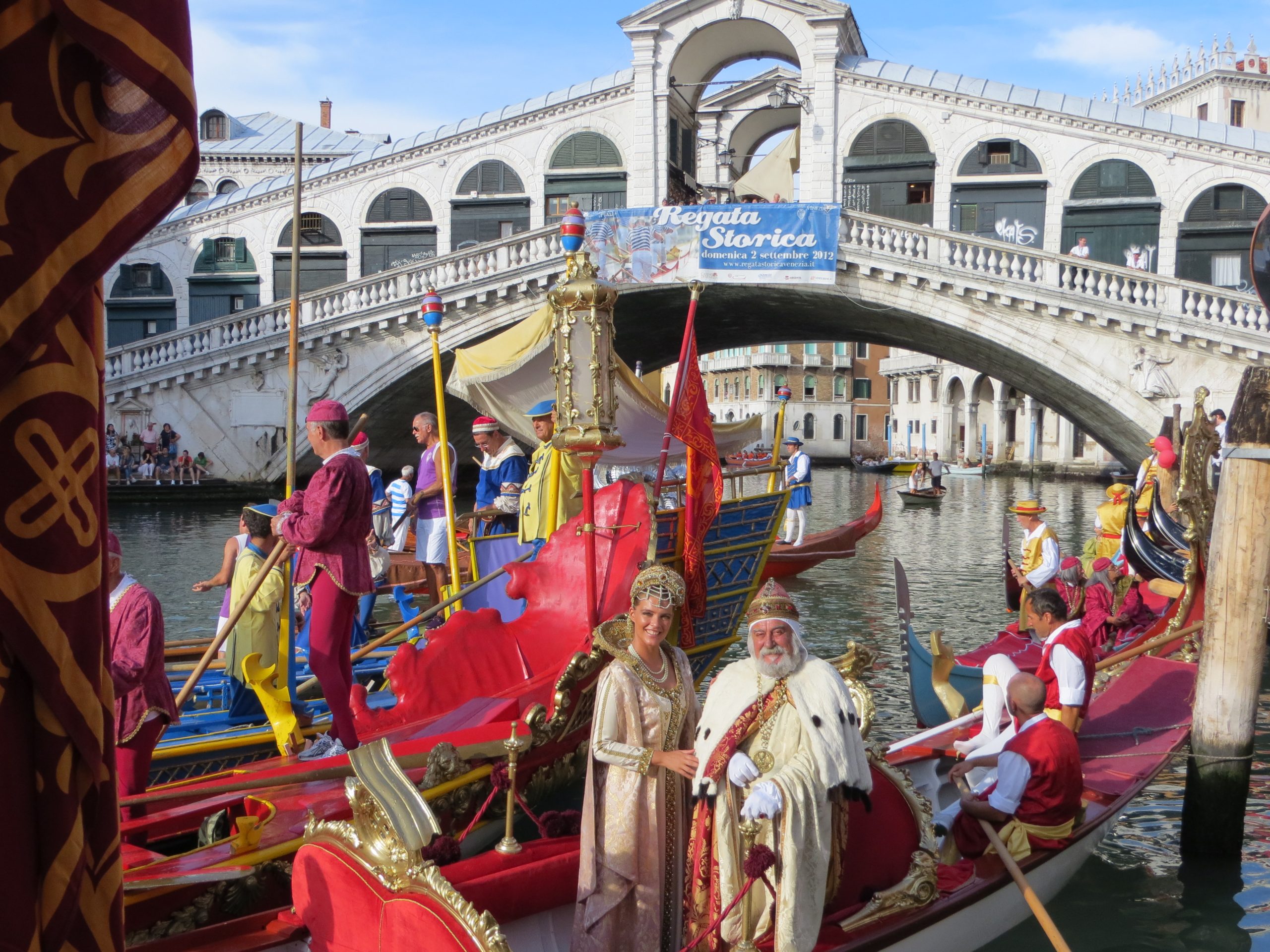

 A scenic 15 minute water taxi ride delivered us to Venissa’s doorstep, where we were about to have one of the #1 culinary delights of our lives!
A scenic 15 minute water taxi ride delivered us to Venissa’s doorstep, where we were about to have one of the #1 culinary delights of our lives!
 We were greeted by gracious Chef Paola Budel and found the information on Venissa’s website: http://venissa.it/
We were greeted by gracious Chef Paola Budel and found the information on Venissa’s website: http://venissa.it/
Paola Budel is a young Bellunese chef originally from the town of Feltre, who after studying under Gualtiero Marchesi and Michel Roux, set off on an interesting career first of all in prestigious Italian restaurants then in the best kitchens in London, Monaco, Tokyo and Hong Kong. She then came back to Italy to take up the position of executive chef at the Principe di Savoia di Milano where she became a renowned chef tout-court.
Her latest culinary challenge is Venissa the innovative restaurant that takes its name from the estate on the island of Mazzorbo where it is located. Venissa was born from the dream of Paola and Gianluca Bisol who wanted to give life to a project that would reinvigorate Venetian catering and hospitality.
“I select the dishes based on the raw materials that the local area provides daily” says Paola, “creating a menu that changes virtually every day giving rise to honest-to-goodness, farm-to-table cuisine”. In fact, every morning the farmers bring the beet chards, peas and baby artichokes from the vegetable garden, the fish comes from the Lagoon and the Adriatic while the meat is chosen according to source giving preference to the Venetian and Veneto hinterland.
Lunch at Venissa is a top level culinary experience lived in direct contact with territory that has given life to the products used in Paola Budel’s dishes.
From the tables situated on the panoramic patio or from behind the glass panes that make up the main wall of the restaurant, you can closely admire – almost touching them with your hands – the beet top, artichoke, and wild garlic plantations and all the other crops that are gathered every day and form the fundamental part of Paola Budel’s menu, the corner stone of her extraordinary recipes.
This is why the menu in the Venissa restaurant changes almost daily: it is closely linked to the seasonal availability of the local products, whether they be from the allotments or the sea, and every day it offers a selection and blend of products that give a unique panoramic insight to the best that the Lagoon area has to offer.
Venissa has been recently recognized in Food & Wine:
In the September 2012 edition of Food and Wine, the American enogastronomical cult magazine distributed throughout the world, showers restaurant Venissa with praise in a feature aimed at the discovery of five locations of Italian excellence.
In the article, penned by Megan Krigbaum, the chef Paola Budel offers the readers of Food and Wine a simple yet elegant recipe using ingredients only available in the local area, from locally caught fish to greens grown in the vegetable garden of the estate: Kamut spaghetti with clams, chicory and parsley paired with Venissa wine. On the website of the magazine it is also possible to read the exact ingredients as well as the indications for perfectly preparing the dish: www.foodandwine.com.
 More Information on Burano, and Venissa’s Island below from Venissa’s site: Venissa
More Information on Burano, and Venissa’s Island below from Venissa’s site: Venissa
The History
Burano and its “twin” Mazzorbo, only separated by a suggestive timber bridge, have for centuries been the meeting point between the Serenissima and the mainland. In fact, these two small islands are situated at the heart of the present-day Northern Lagoon Park and are only half an hour by ferryboat from the historical centre of Venice and 15 minutes from Treporti.
The history of these two islands, closely linked through hardship and tradition, dates back to the 5th century a.C. when the inhabitants of ancient Altino took refuge there in order to escape from the Huns. The islands then grew in importance and wealth at the same rate as Venice even though they were autonomously governed until 1924.
Burano, famous as a lace-working centre, also became a tourist destination for many of the Venetian elite families who built sumptuous villas with flourishing gardens, which became the meeting places for artists and scholars. Mazzorbo, and the nearby Mazzorbetto, became places of spiritual retreat and agronomy instead: the small number of inhabitants, above all farmers and monks, dedicated themselves over the centuries to the production of typical lagoon vegetables, looking after fruit trees (above all the grapevine) and nurturing fish breeds on the fish farms.
The Venissa estate in Scarpa-Volo, located on Mazzorbo, plays testimony to the cultural history of the lagoon farmer as linked to the production of wines and vegetables: it has been preserved over the centuries firstly as a convent vegetable garden, then as a domestic vineyard and today it offers guests the chance to visit a protected area of incredible merit from the point of view of landscape, agriculture, human endeavour and equipment.
Scarpa-Volo is a perfect example of a “walled vineyard”, in fact, the entire estate, consisting of an area of 2 hectares is enclosed in eighteenth century walls which were partly rebuilt in the following centuries and features classical buildings erected in the traditional rural architectural style of the lagoon: the manor house with its protruding chimney (vallesana style), the cellars, the stable, the barn and the equipment outhouses.










